latin baroque
1/66
There's no tags or description
Looks like no tags are added yet.
Name | Mastery | Learn | Test | Matching | Spaced |
|---|
No study sessions yet.
67 Terms
Columbus letters
one was meant to be publicized and one was for the monarchy directly
Taino
First people encountered by Columbus, sophisticated culture w two gods. Fought back
Art: Zemi cohoba stand
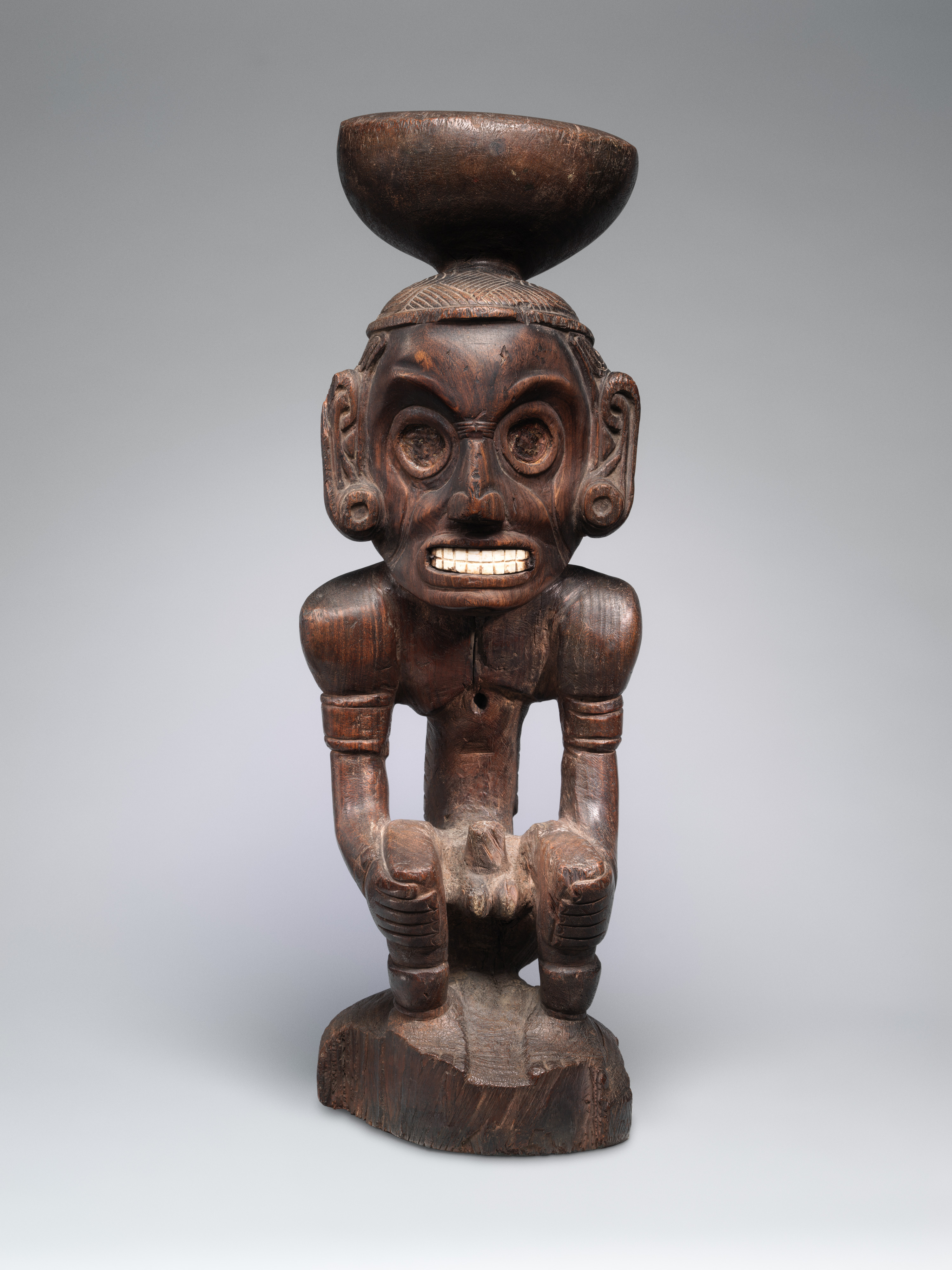
Zemi Cohoba Stand
Taino work, visual fasting-ribs shown, effects of cohoba-alert eyes, open mouth, and tears. woven cap, ear spools
Cohoba ritual
hallucinogen made of ground seeds. purpose was to communicate with dieties. involves fasting
Nahuatl
language spoken by the Mexicas
Tenochtitlan
Myth about the foundation of the city. Means “next to the nopal cactus fruit of the rock.” Hitzilopochtli told the people to settle once they find a eagle on top of a cactus with a snake in its mouth. That’s why they settled in the middle of a lake. Founded in 1325. Lake Texcoco. art example: first page of codex Mendoza
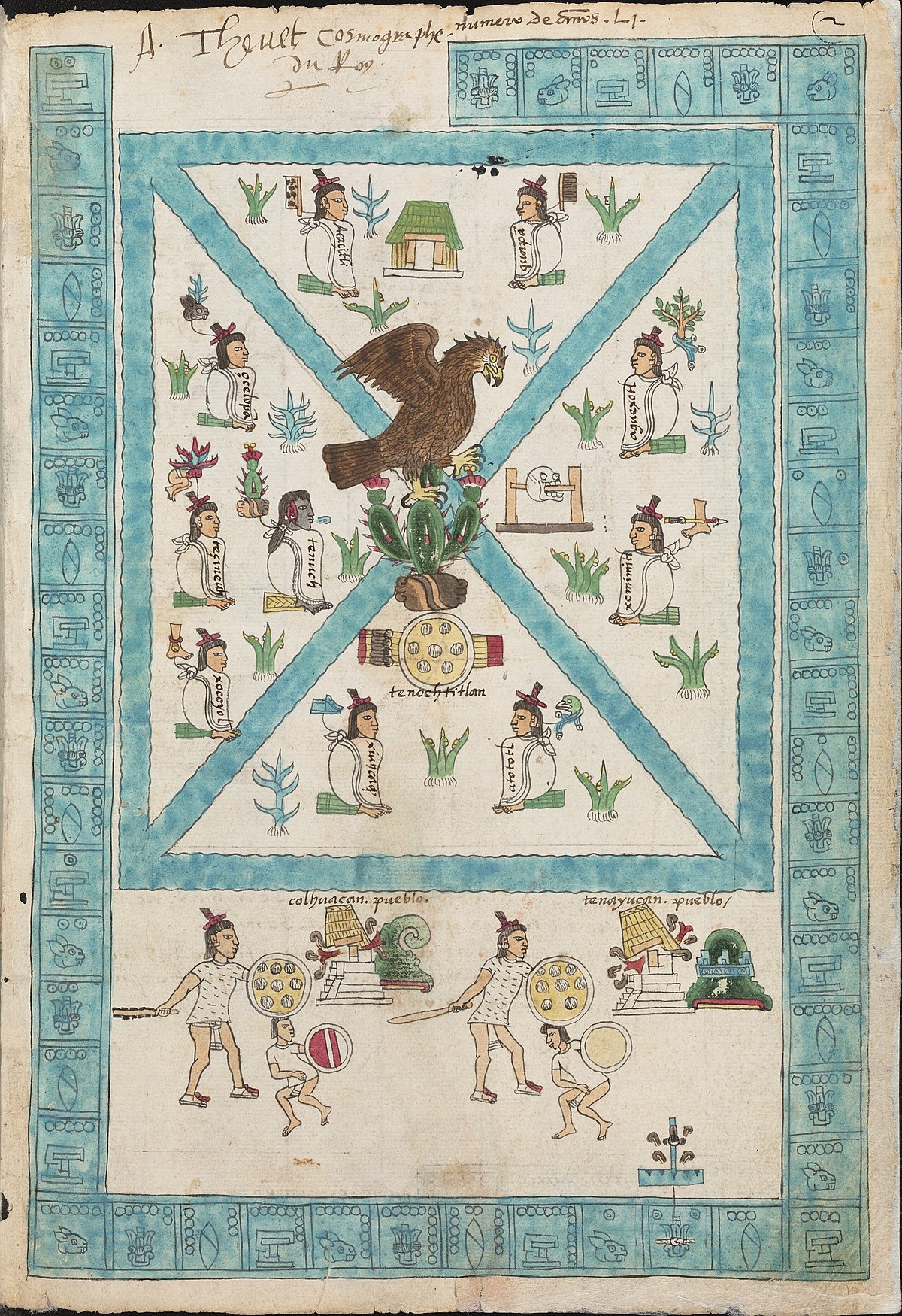
First page of the Codex Mendoza
prepared for spanish Viceroy in the 16th century. represents myth of founding of Tenochtitlan
Alepetl
water hill. political entity (city) with a sacred hill and a source of water. water and hills were important because they were sacred spaces. its what deities leave behind. art example- map of Tenochtitlan
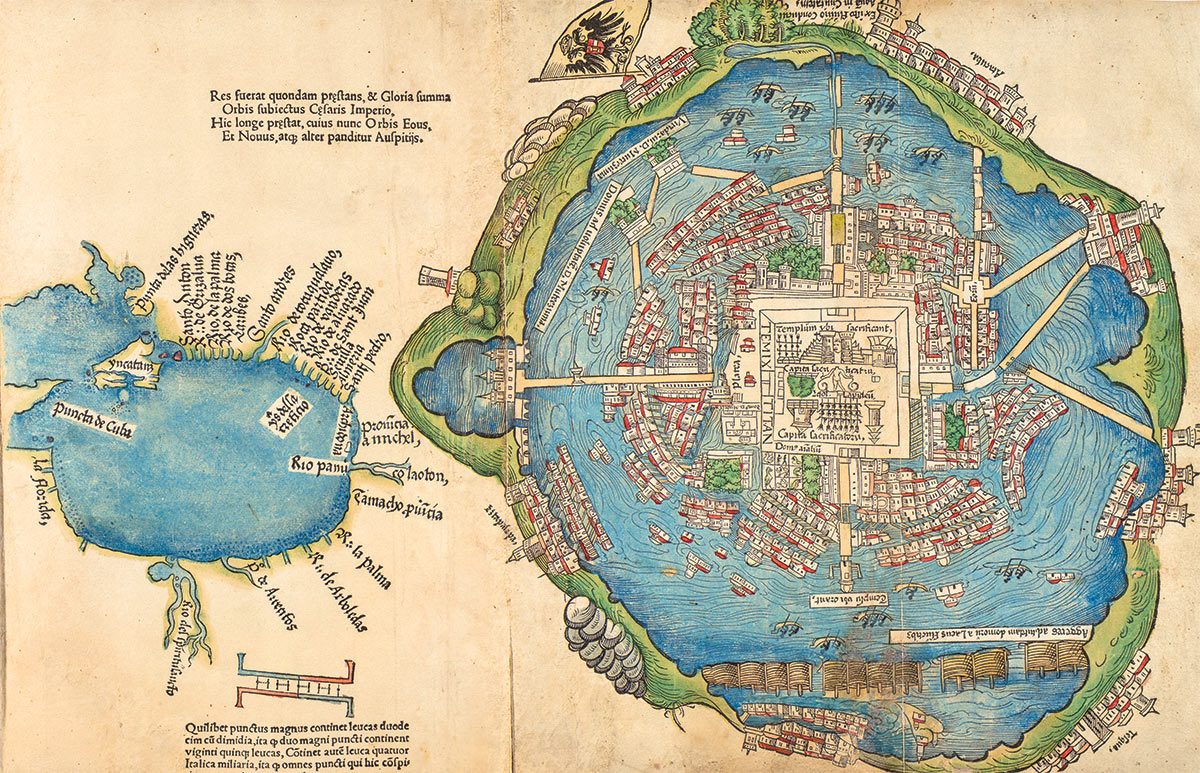
Map of Tenochtitlan
possibly made for Cortes, 1524, its layout was made as a european style map. but the info is very specific snd knowledgeable so we know it was made by a native. emphasis of temples, canals for transportation.
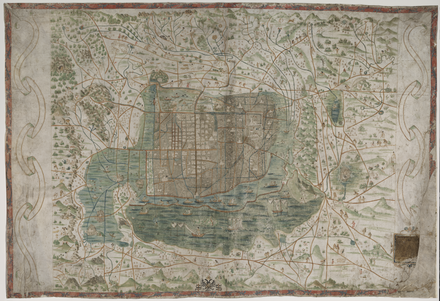
Map of Santa Cruz
1537-1555, represents the dikes and water system and chinampas (traditional floating gardens)
Huitzilopochtli
patron God of the Aztecs, hummingbirds and eagles associated with him. led the people to Tenochtitlan. son of Coatlicue. Quetzalcoatl feathers associated with his conception
Glyphs
picture writing based on how an object looks/symbols
Tlacuiloque
painter scribes, people who were considered to have lots of knowledge of the culture. Went to calmecac schools
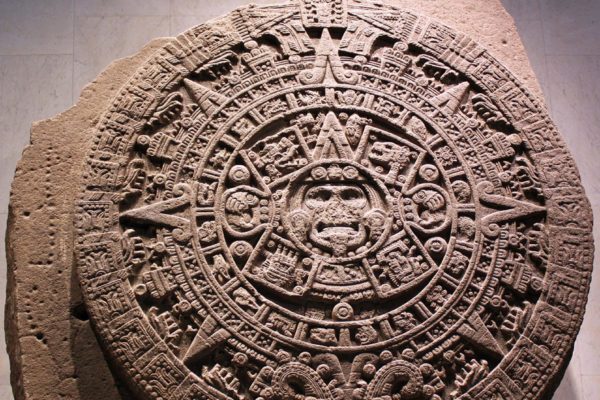
Aztec sun stone
late 15th century. originally was on the floor. flatness, repetition, geometric,. abstraction. shows large earlobes-sign of status. two snakes, claws, other animal representations. shows 4 quadrants. five eras. we are in fifth era (four movement). shows the sun god, Tonatiuh in the center
Ollin
“movement” that causes the earthquake that brough us to the fifth ear (or sun). Ollin is the name of the glyph. art example: Aztec sun stone
Templo Mayor
sacred precinct of tenochtitlan where sacrifices were made. Mexica belief- in order for sun to come up everyday, sacrifices had to be made.
superimposition
each ruler added a new layer to the templo mayor. the layers show rubble as it was covered with plaster and painted over.
chinampas
floating gardens, shallow lakes allowed for vegetables and plants to grow on the surface. Shown in map of tenochtitlan

templo mayor (reconstruction 1375-1520)
twin temple with lots of layers (superimposition). On one side it was dedicated to the patron God (H). included sacrificial stone (coyolxauhqui monolith) where the victim would land. included a snake mountain (coatepec) to represent where he was born. onther side dedictaed to Tlaloc-god of water, rain, fertility. both temples reminiscent of mountains, serpents on gorund relate to H and the land they founded.
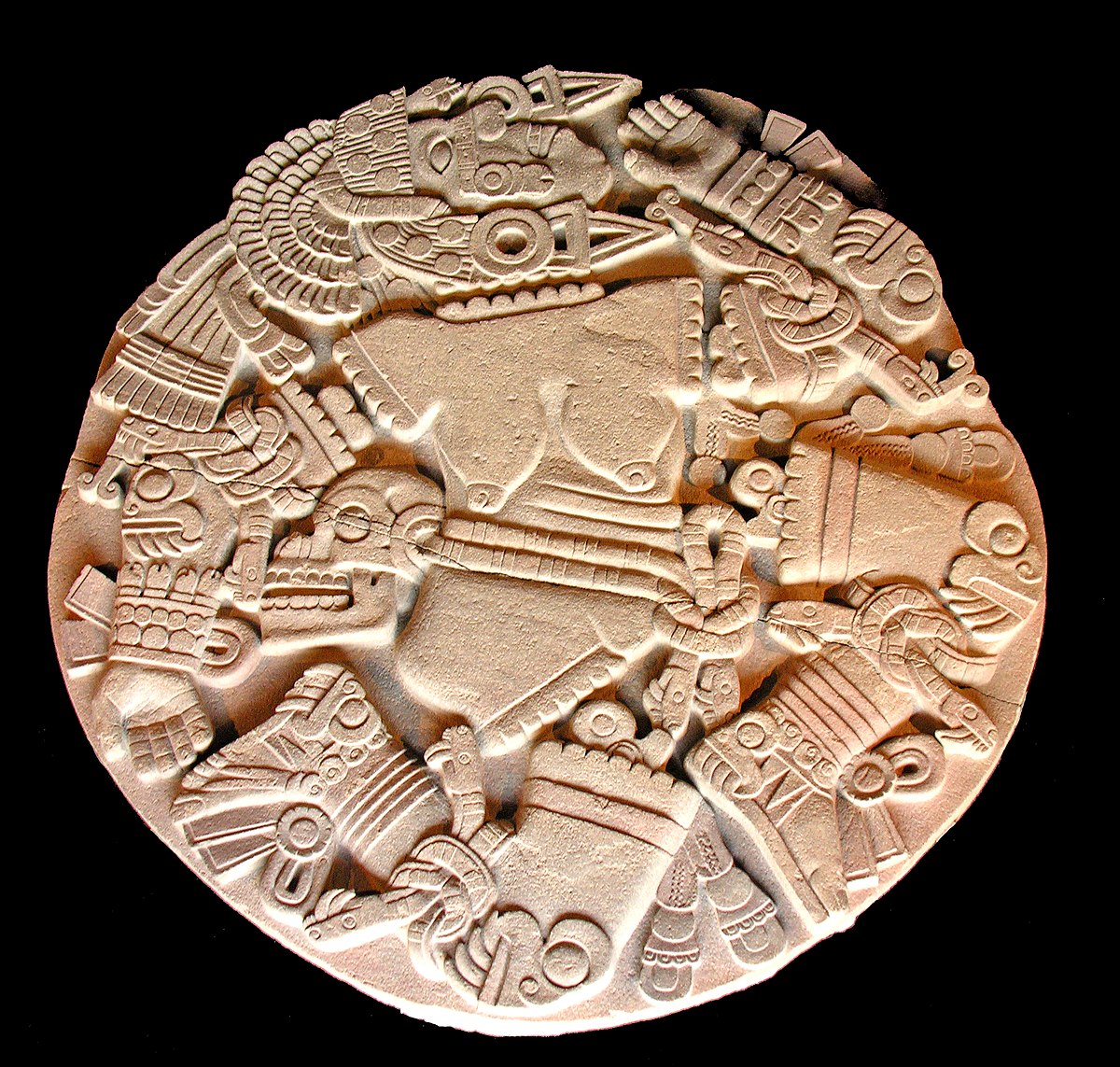
The moon Goddess Coyolxauhqui
1469 daughter of Coatlicue, she led the army of her kids to kill her. her body was thrown off the mountain by H (like the monolith stone). she is dismembered. closed eyes refer to death. elaborate headdress, earlobes (sign of status) breasts and rolled flesh tells us she is a mother. originally the sacrificial stone of the temple. implemented fear in the enemies
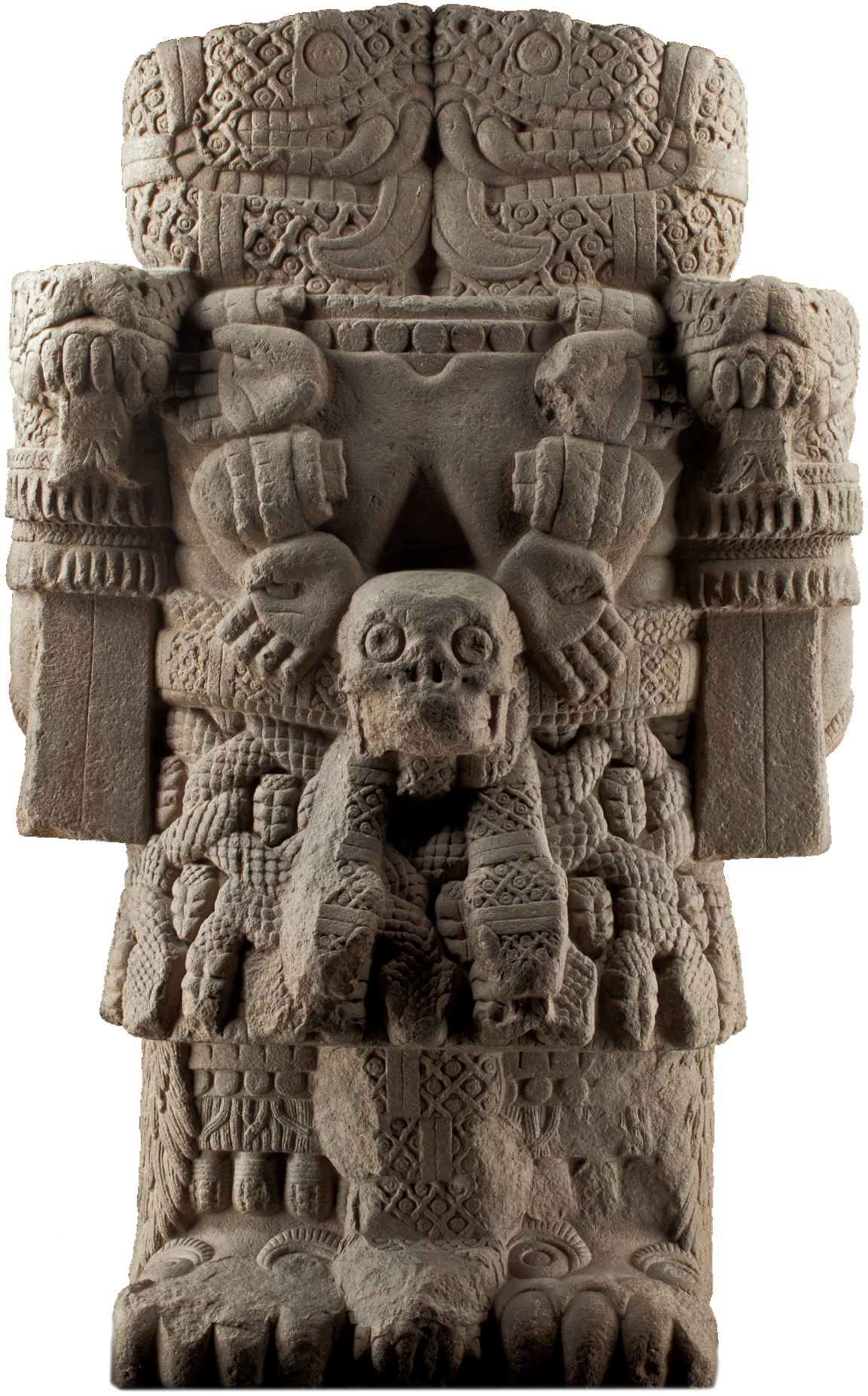
Coatlicue (she of the serpent skirt)
1350-1521. likely on right side of twin temples, snakes on hger head represent decapitation (blood). human organ neckalce (sacrifices), she sacrificed herself for her son to live.
Quipu
Andean recording device w knotted string. made from alpaca fibers. textiles most valued material. didnt have written language. area had lots of spoken languages so this was helpful to communicate between everyone
Tawantinsuyu
Inka empire called their land this, land of the four parts. Capital was Cuzco. empire at its height when spanish invaded. had many languages and cultures within empire.
fringe of red yarn
signifies royal authority and is worn on the head
qhapaq Nan
road system built between the lands of the inka empire because it was so large. covered 25,000 miles. used to deliver messages and gather goods. art example-winged messanger ear spool
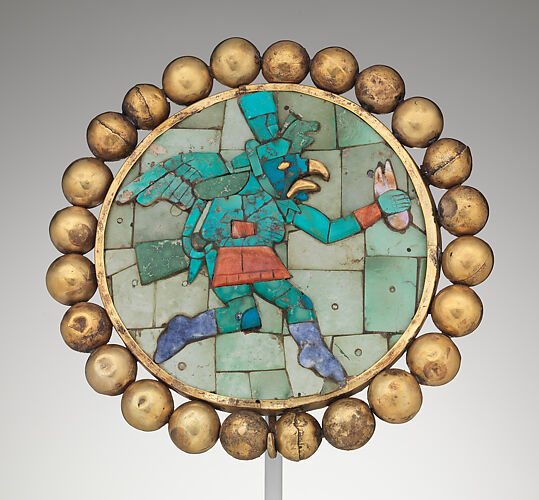
winged messenger from Moche culture. 3rd-7th century
ear spool, stones were valued and sacred. worn by someone in high status. relates to Qhapaq Nan. iconography of running: wings, legs, arms. the patron had the power to get all these materials from around the empire via trade route.
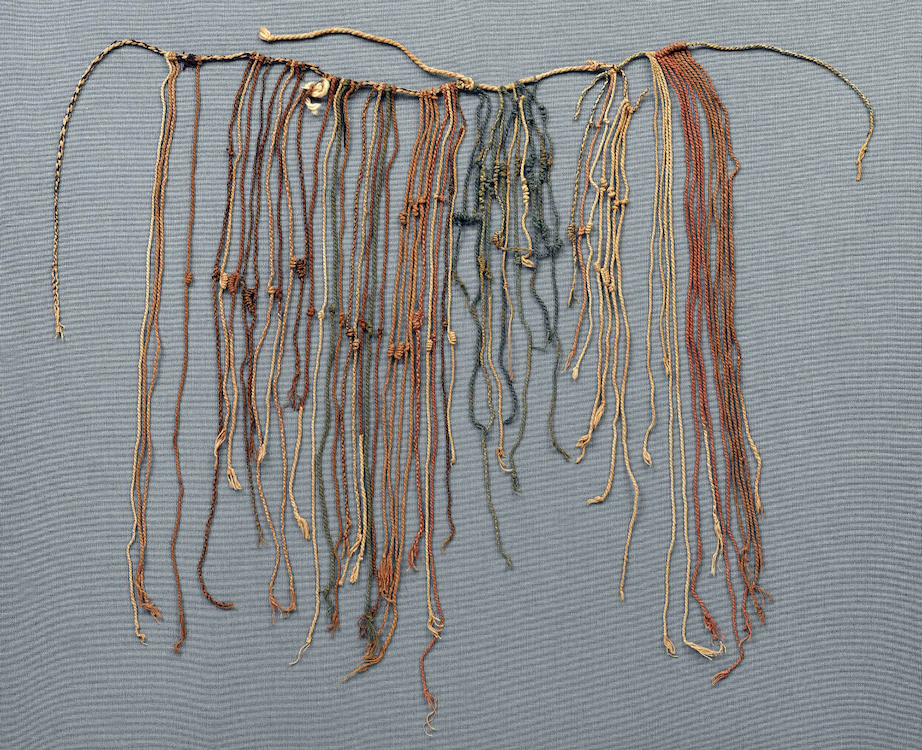
Khipu
inka, 1400-1532. example of a quipu recording device
Inka art
importance of materials, technical expertise, and process, especially stone and textiles. decorations standardized
high status objects
objects exchanged between rulers and places they conquer. by this exchange, it pays respect to preexisting rulers but also implements their power. Telling people they have power to make works pof art and gather materials. shows economic and technical power of the inka. ex. unqo tunic
tribute empire
through conquests, inka offered protection/benefits in exchange for taxes and labor. other religions were welcome as long as they embraced the sun god
unqu
a man’s tunic (inka)
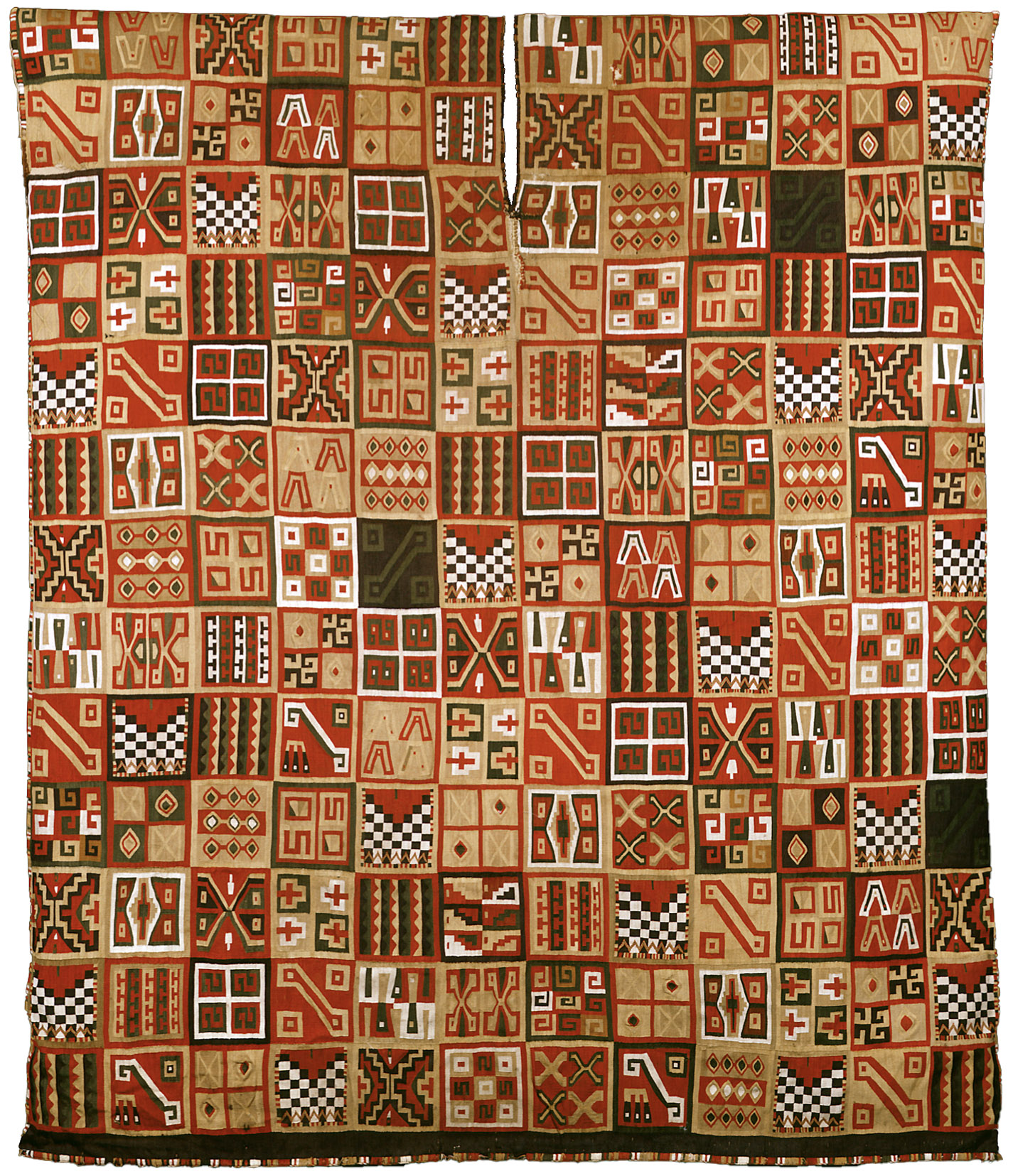
man’s tunic (unqu)
early to mid 16th century. Textlies were created by Acllas (chosen women who were virgins and brought to Cuzco). textiles more valuable than gold. T’opaque -square geometric motifs that were repeated throughout inka art and textiles. each could have represented a different culture in the empire. shows off power and authority. example of high status objects bc of the labor and skill required. intened for the spa inka (inka ruler). Includes checkboard design of the inka army.
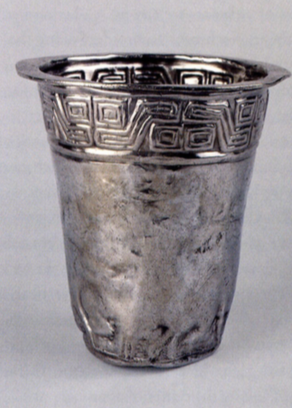
Aquilla
1500, inca, cup made with Aquillas (gold or silver). can also be made with Keros (wood). used in ceremonies and exchanged. one cup is always larger so the other person can accept their power.
ashlar masonry
stones joined without mortar. done with nibbling (fitting the stone together perfectly) that was metaphor for the social order. in eurpoean perspective, it was shit. high prestige masonry. they made trapezoid-shaped doors and windows. beleived by using stone they were negotiating w nature
huaca
sacred thing or shrine (example rock)
kamay
sacred essence. example; stone

exteriror and interiror view of Santo Domingo
sopanish didnt destroy all of the structure but built on top of it. built where the sun rays were meant to reflect on certain areas of the empire. Has a coricancha (golden enclosure; originally covered in gold)
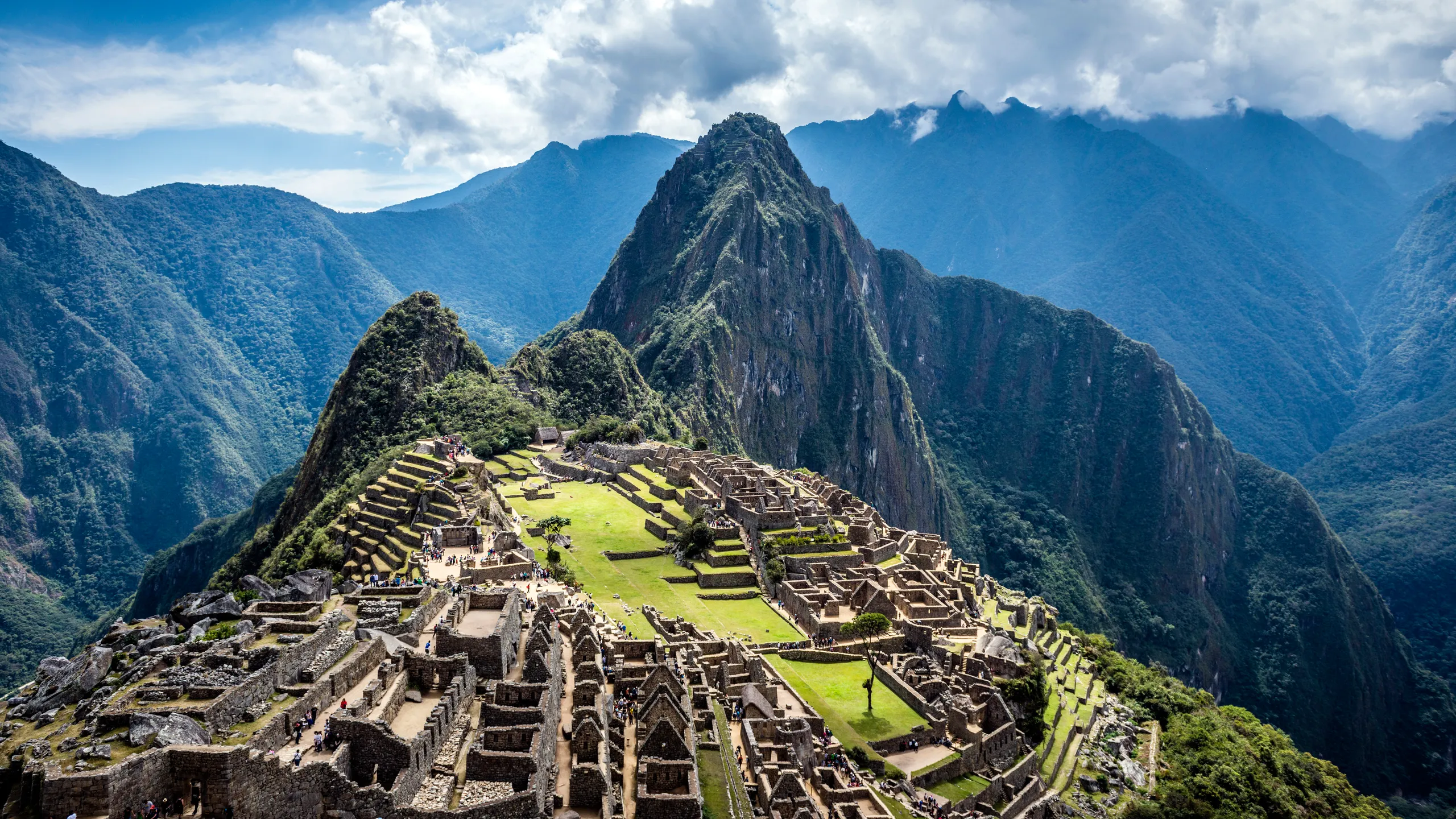
Machu Picchu
inca, peru, 15th centruty. built as a royal estate for the first ikna emporor. had terraces, mounatin peaks (apus- mounatin spirits)
conquest of Mexico
1519-21. Moctezuma II was the empire of the Mexica’s when they were invaded. he was killed during initial stages. Malintzin (la Malinche) was the communicator between cortes and her people.
the Florentine Codex
research study compiled by Bernardino de Sahagun. 1555-1579. he was one of the first professors at the college of Santa cruz in Tlateclo. 12 books used by Mexcia to teach peopple of Gods, ceremonies, omens. Dedicated to the conquest of Mexico. Last bookoffers 3 versionsof the conquest: Nahuatl text, spanish paraphrase/translations, 161 images made by tlacuiloque (painter scribes).
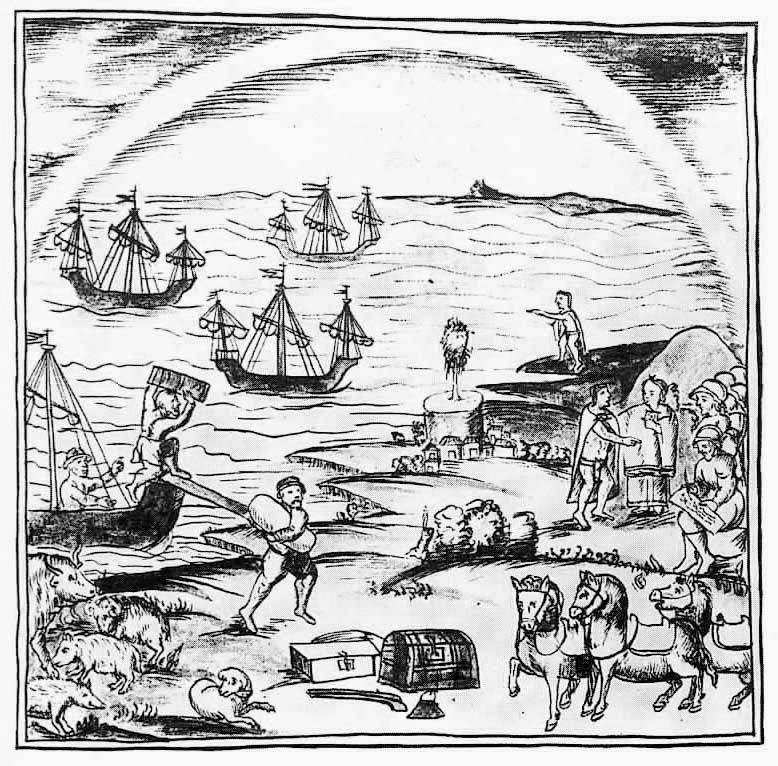
Spanish land on the coast of Mexico, Florentine Codex
shows the paraphrased versions in spanish
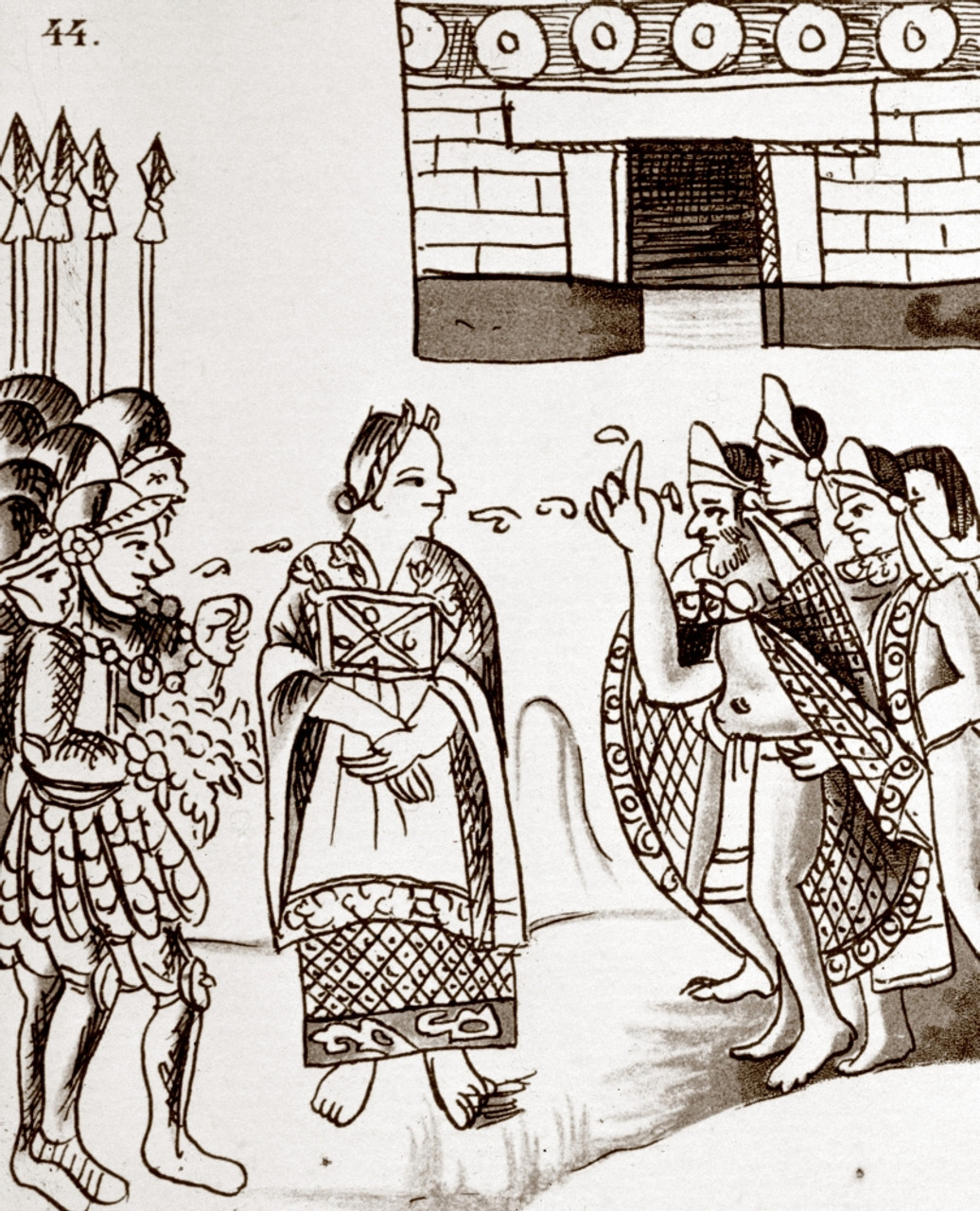
Meeting between Moctezuma and Cortes
from florentine codex, 1555-79. speaking glyphs between both groups. she stands in the center.
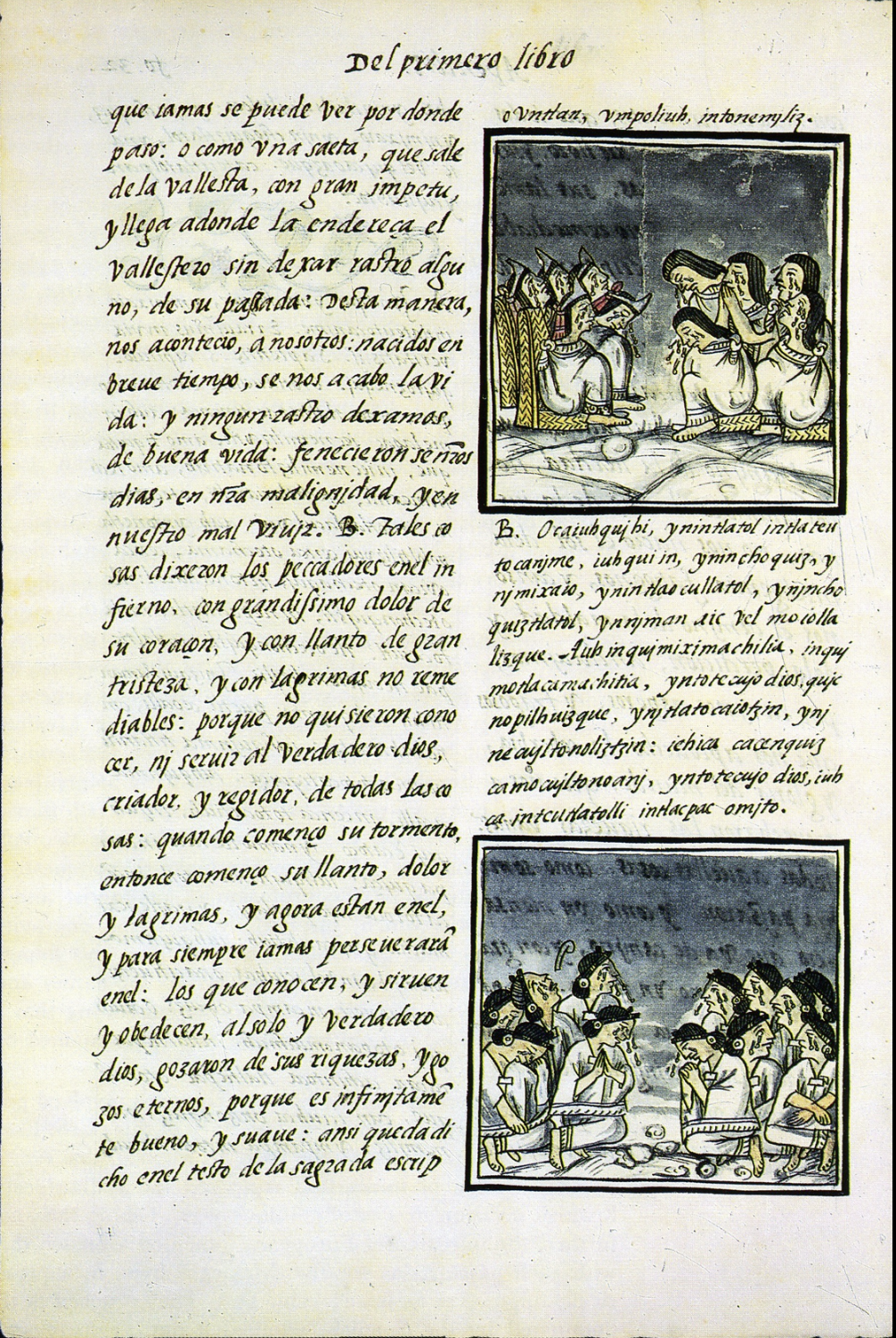
The nobles’ Lament
florentine codex
Huipil
female aztec dress. worn by malinche with her hairstyle too.
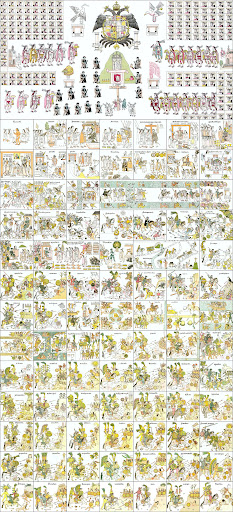
The lienzo de Tlaxcala
“the loyal city” contained one large rectangular main scene with 87 smaller scenes. created in 1552. brought to spain by Tlaxcala ambassador (cortes’ allies and enemies of empire). Recounts the overthrow of the Aztec empire in their point of view. intended to remind Charles V that cortes tld them they were to receive benefits. Includes sacred bundle-images of dieties kept within clothes
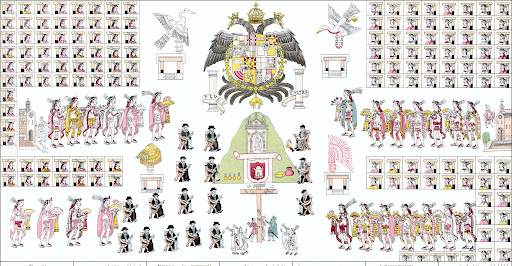
The four princely houses of Tlaxcala and the spanish crown
top of Lienzo. europeans shown sitting down. their coat of arms in the center. shows altepetl (water mountain). Mixture of different cultures
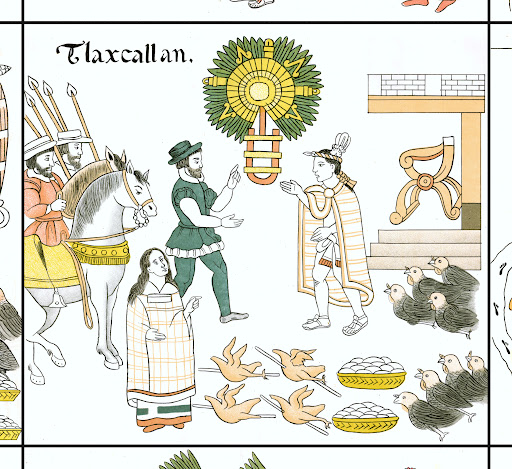
cortes seals the alliance with the Tlaxcalan rulers
from lienzo de Tlaxcala. right in the center. they had not yet got the benefits promised to them. Malinche and a guided sun is depicted-idea that its the beginning of a new era.
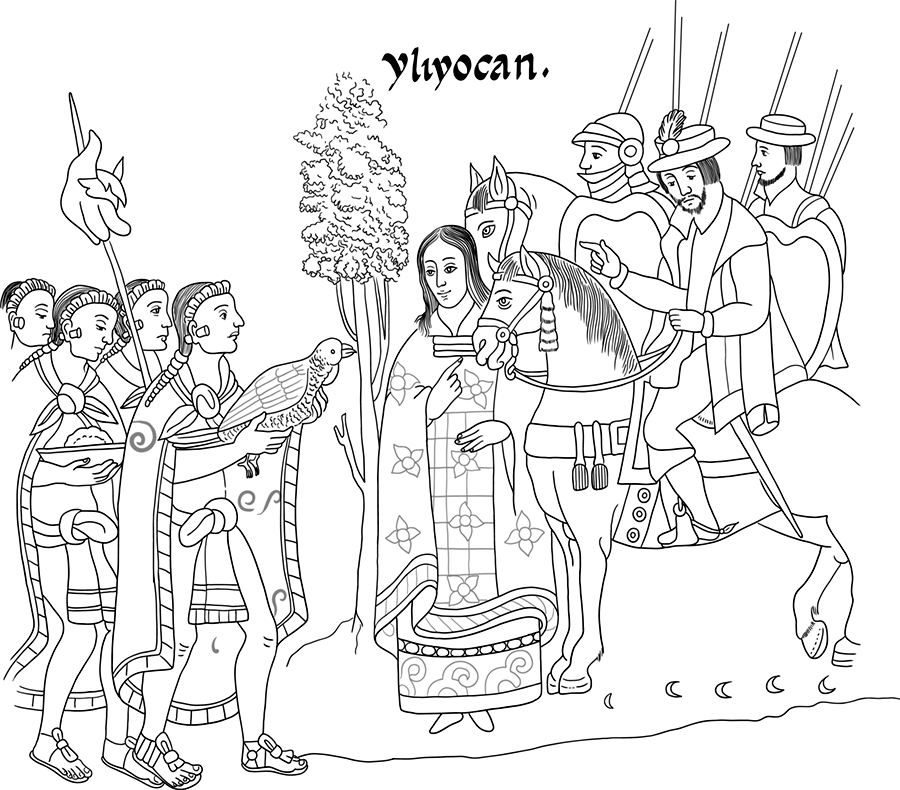
the first encounter between Cortés and the Tlaxcalans
from Lienzo de Tlaxcala. shows Malinche as a translator, interpreter, and diplomat
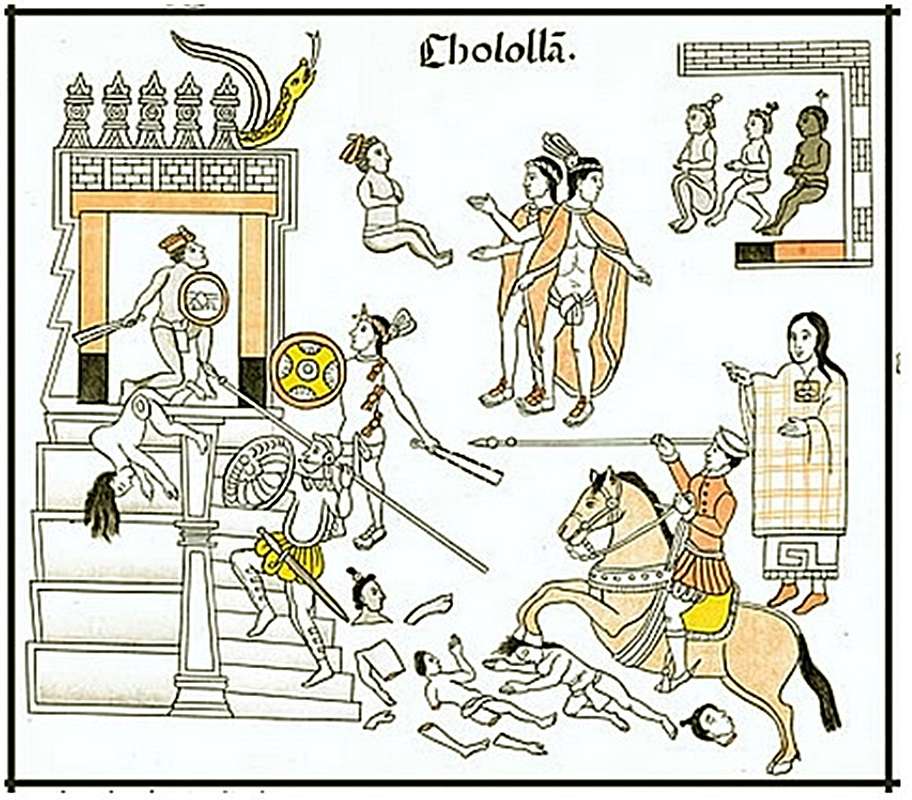
Massacre of Choula
from Lienzo de Tlaxcala. shows Malinche as a autonomous leader, also her betrayl of her own race. her hair and dress are indigenous but her shoes are spanish. symbolic of her integrated in both cultures.
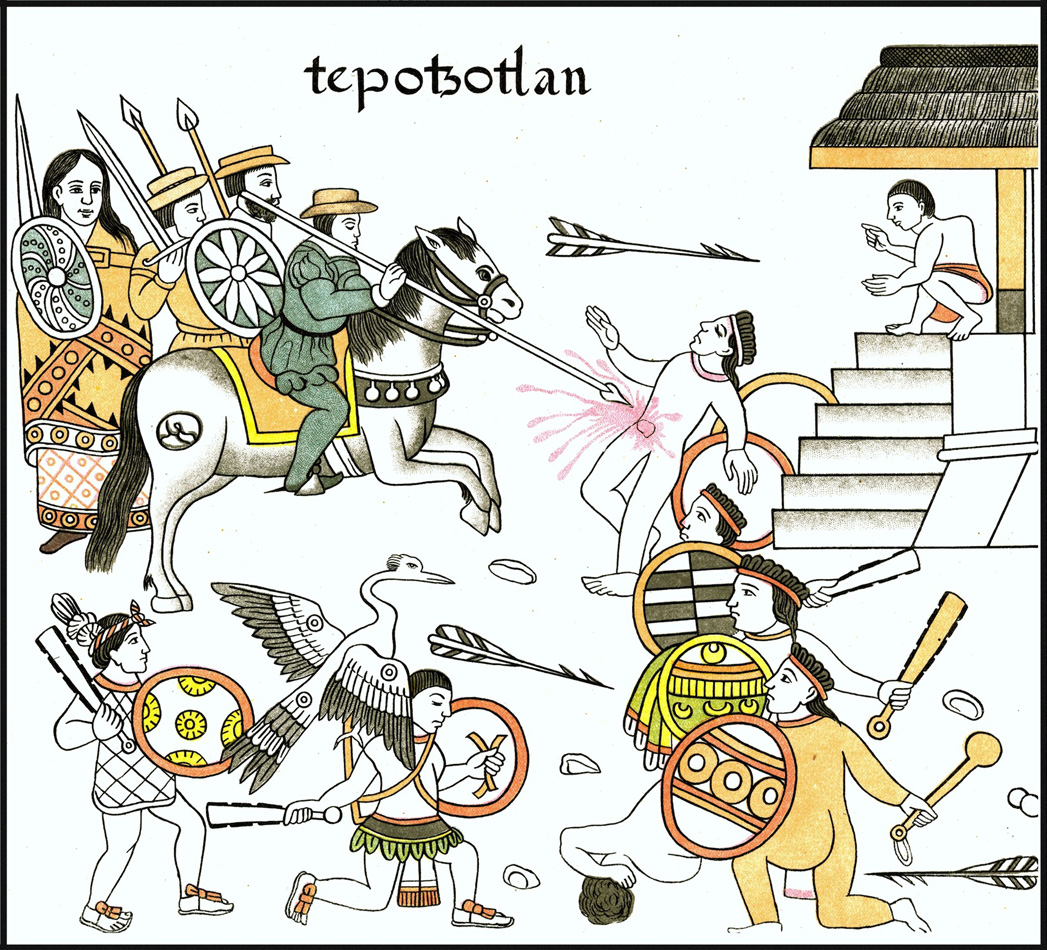
The battle of Tepotzotlan
shows malinche as a warrior goddess. she appears in momnet of charge, like pre-hispanic myths and legends.
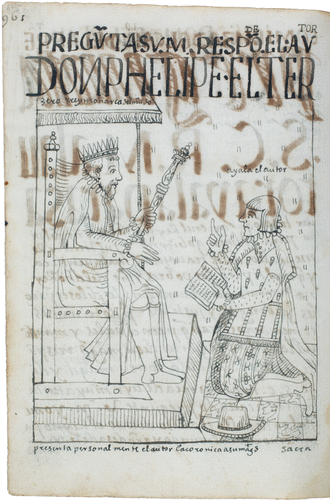
The king asks and the author responds, completed 1616
1200 page book intended for the Spanish monarchy to communicate the tradgedies occuring in New Spain and to also reserve a spot as the advisor to the king. written in spanish and Quechua (indigenous language of Peru). By Guaman Poma de Ayala. Title of book: The first new chronicle and good government. uses european conventions to convince eauropean audiences-self portrait and dress.
amantecas
artists who worked with feathers. iridescent feathers had the most tonal-animating force.
pedro de Gante
first place where feather paintings were created post-conquest was College of San Jose de los Naturales, founded by him. the masons, carpenters, and painters built many of the missions of new spain.
Franciscan
Christian religious order. pedro de gante was one of the first three franciscan friars to arrive in mexico, 1523.

The Mass of st. Gregory
made at san jose de los naturales. 1539. feather mosaic. each color is a from a different bird. latin inscription says it was made for Pope paul III. he issued the sublimus Dei that decreed amerindian peoples top be rational humans with complte souls and end enslavement. As a thank you but also as proof they are skilled. shows an understanding of difficult christian doctrines. also demonstrates understanidng of transubstantiation- when god’s presence is in wine and bread. Glyphs take up space that represent passion of christ.
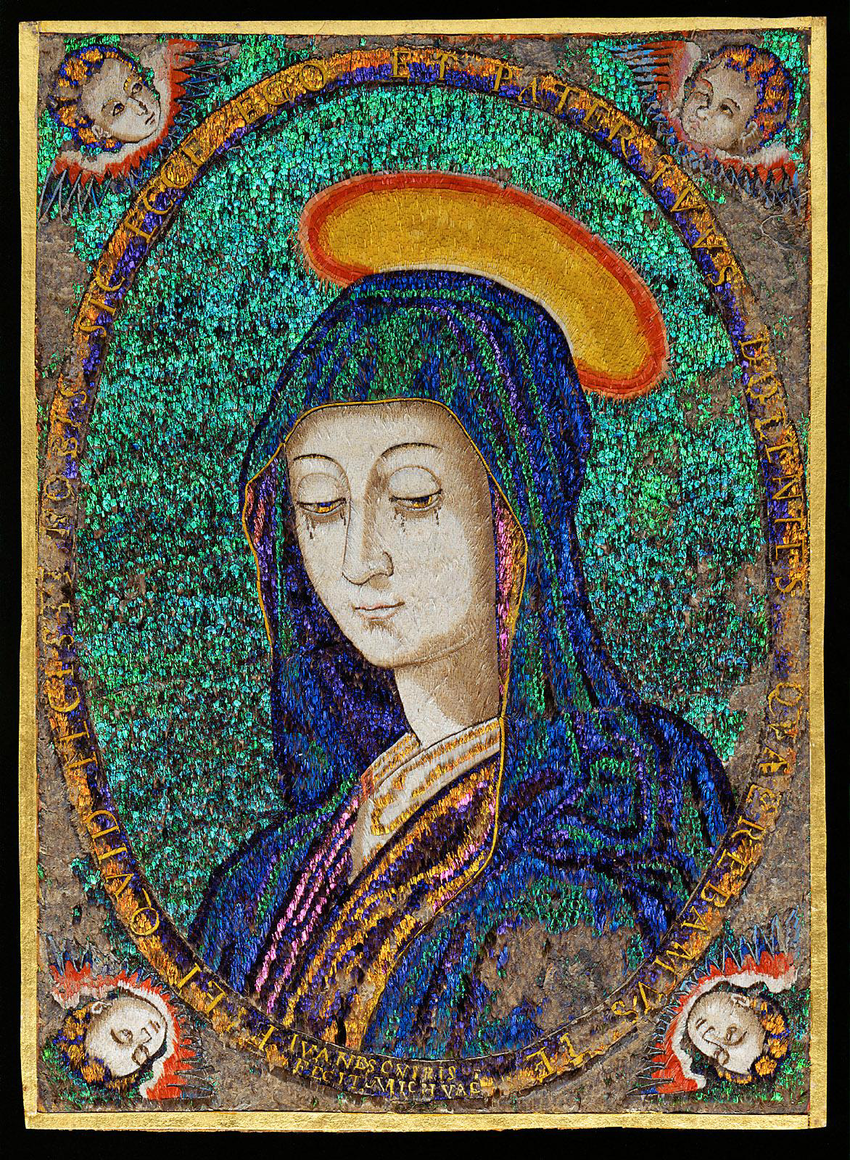
weeping virgin
juan cuiris, 1590. demonstrates that the americas influenced Europe
encomienda system
system of enslavement where spainiards would be given land that indigenous people would work for free in exchange for protection. abolished 1542. pope paul III declared they should not be enslaved in 1537.
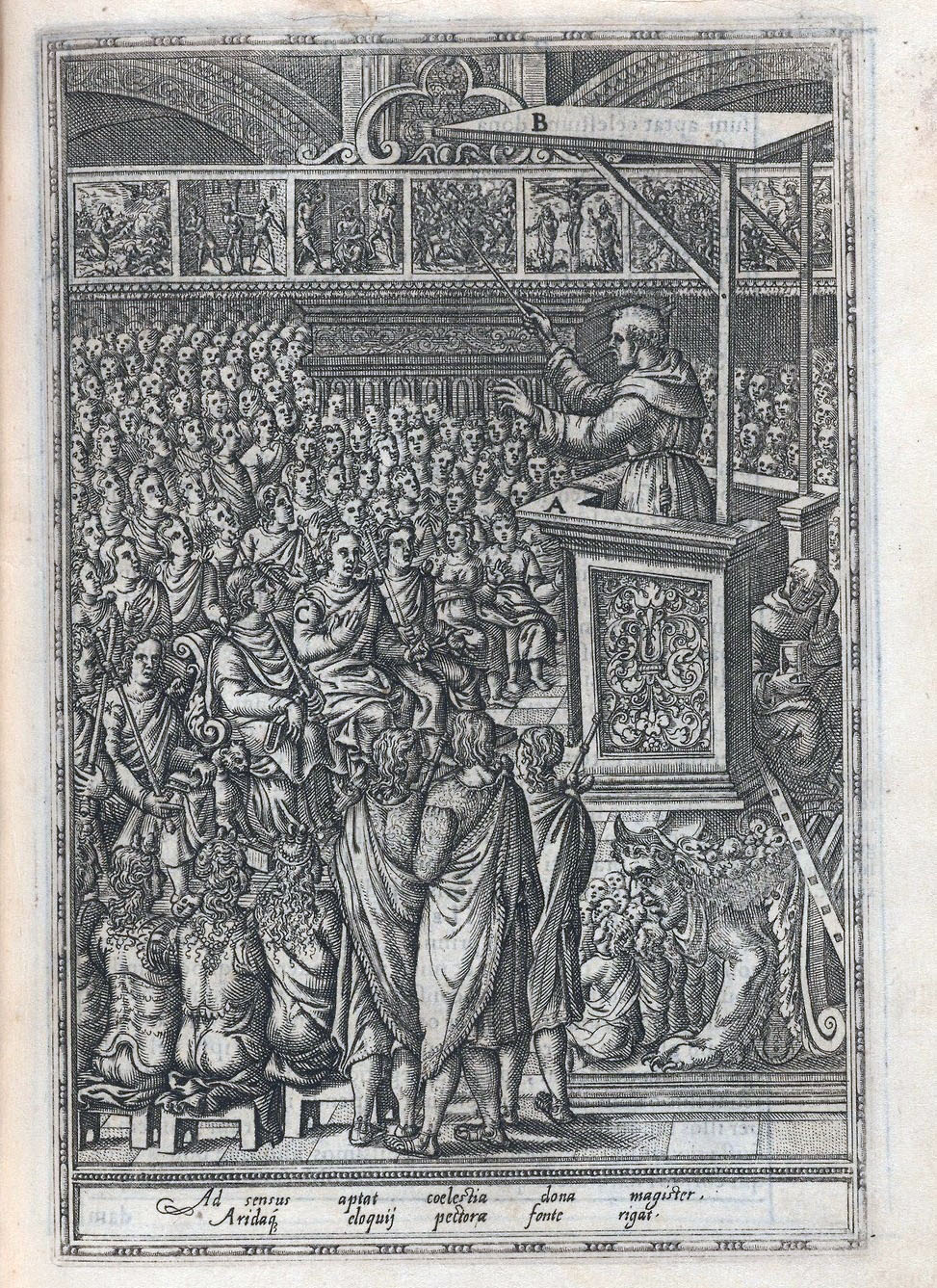
fray pedro de gante preaching to the indians 1579.
part of first book ever published by american born author. instended to describe evangilization and conversion of indigenous people in perspective of missionaries. front of audience wear tilmas-native cloaks. they were the indigenous governement.
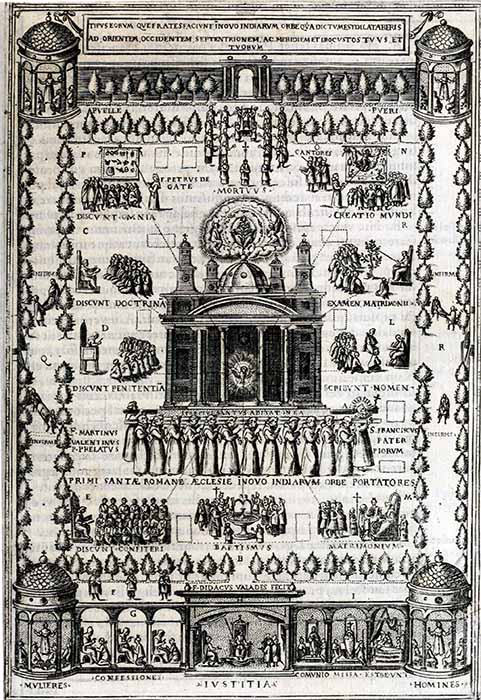
allegorical atrium
fray Diego de Valades, 1579. atrium- enclosed open area preceding the church and monastery (set like a theater). symbollic of all the missions. Friars realized Mexica used open spaces in their religion. Utopianism-friars thought they could built a utopian christiain society without the pressured of the protestant reformation. The missions reflect a space indigenous people could learn about christinity and don’t observe material property. Millenialism- beleif that christ will reteurn and friars were preparing for it.
generic plan of an early monastic church in new spain
includes a single nave church, and atrium, an atrial cross (cross in the center, referenced glyphs and World Trees), posa chapels (square structures w two arched openings and pyramidal roof, altar and fresco painting), and an open chapel (opens to a large atrium)
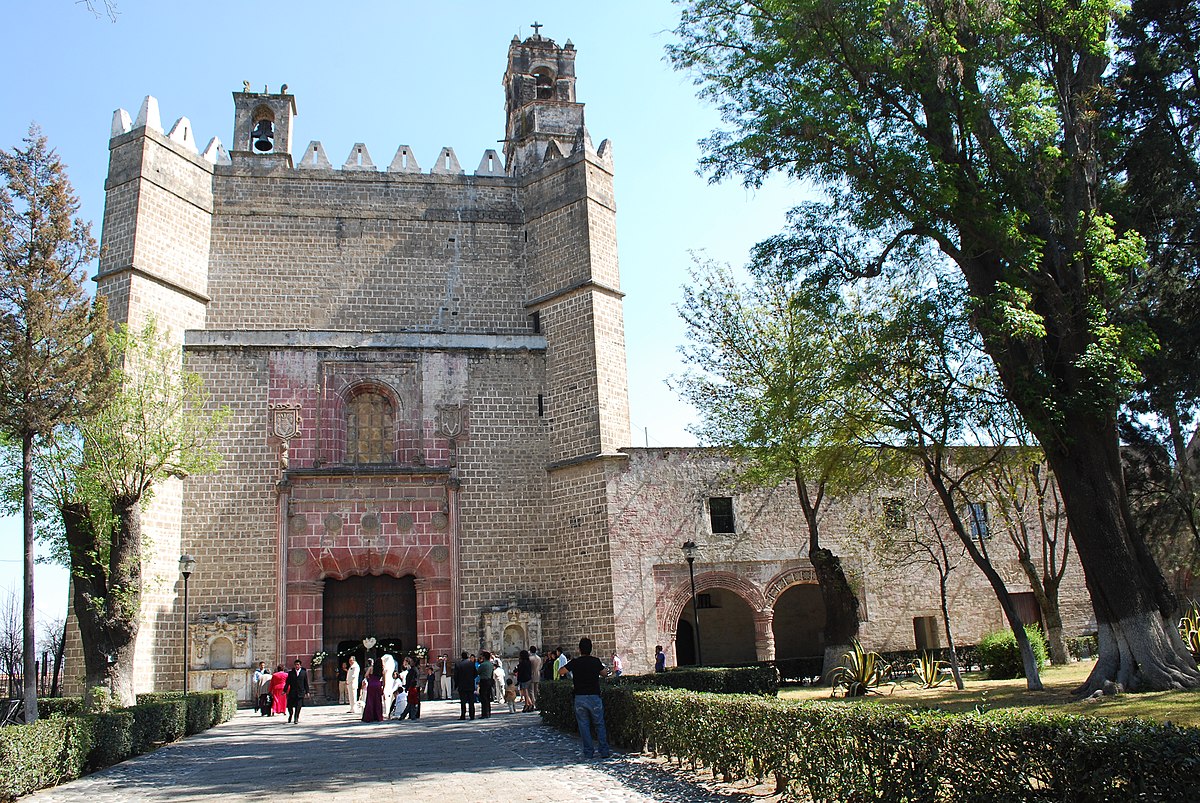
Monastery of San Miguel, Huejotzingo, Puebla 1547-71
includes an atrial cross, crenellations (fortress-like walls), and Mudejar-architceture that mixes islamic and European features. ex. the facade. includes a rounded arch unknown before the conquest.the atrial cross depicts Instruments of passion (or arms of Christ)-has flatness in relief sculpture (pre-contact carving traditions)
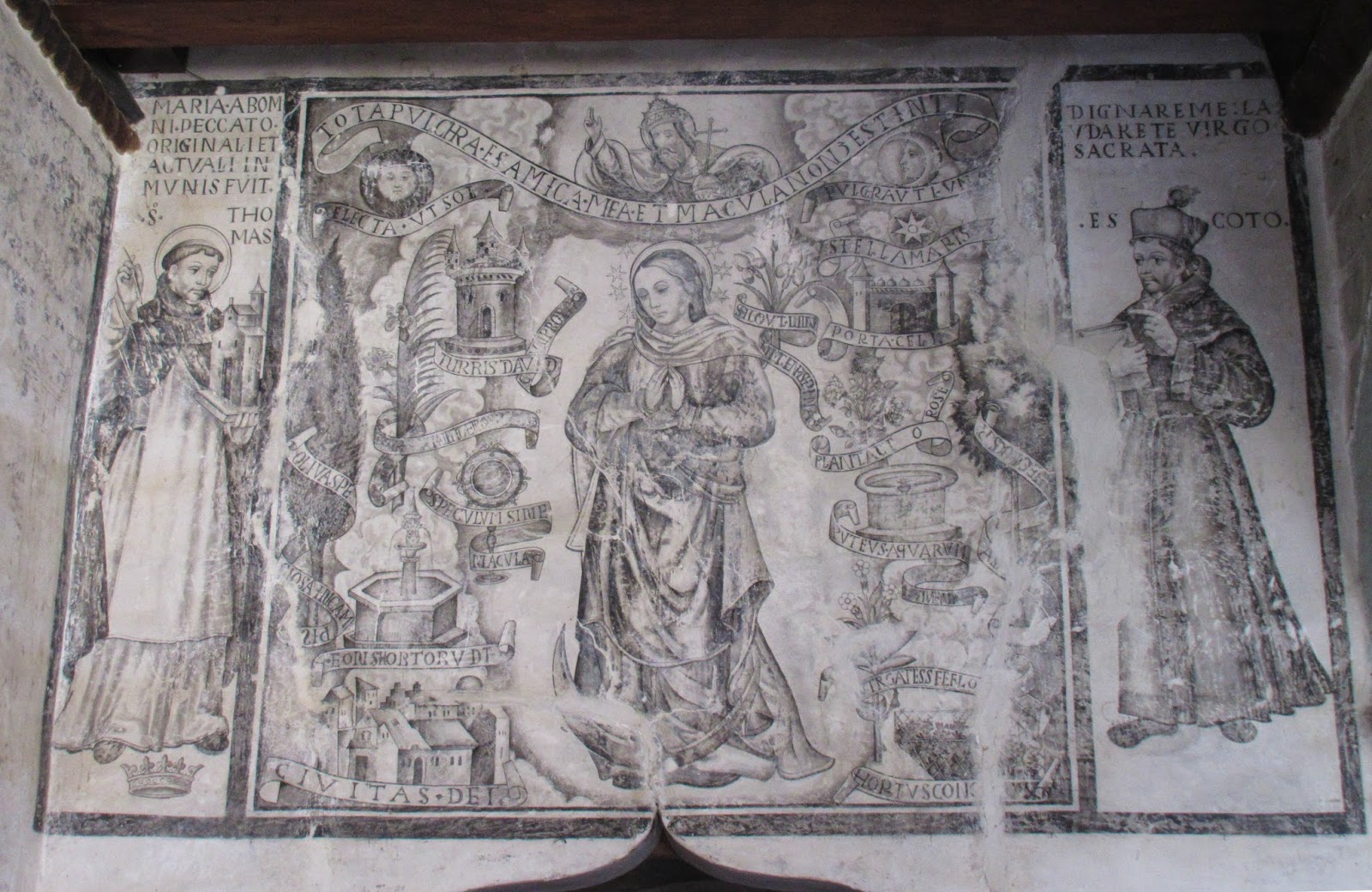
The virgin of the immaculate conception, 1570
at monestery of san miguel H. is a mural. Grisaille-black and white shading for pictorial effect, likely from prints. Chiaroscuro- shading. use of black and white was a way of berasing previous mural traditions with colors.
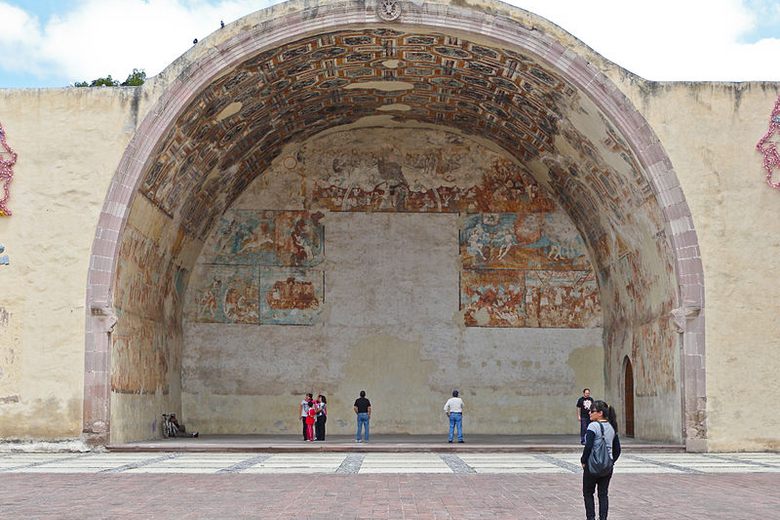
open chapel, monastery of san Nicolas de tolentino
augustian order was considered most liberal. open chapel-one side open towards audience to accommodate natives while church was being built. evoked pre-contact religuious practices.
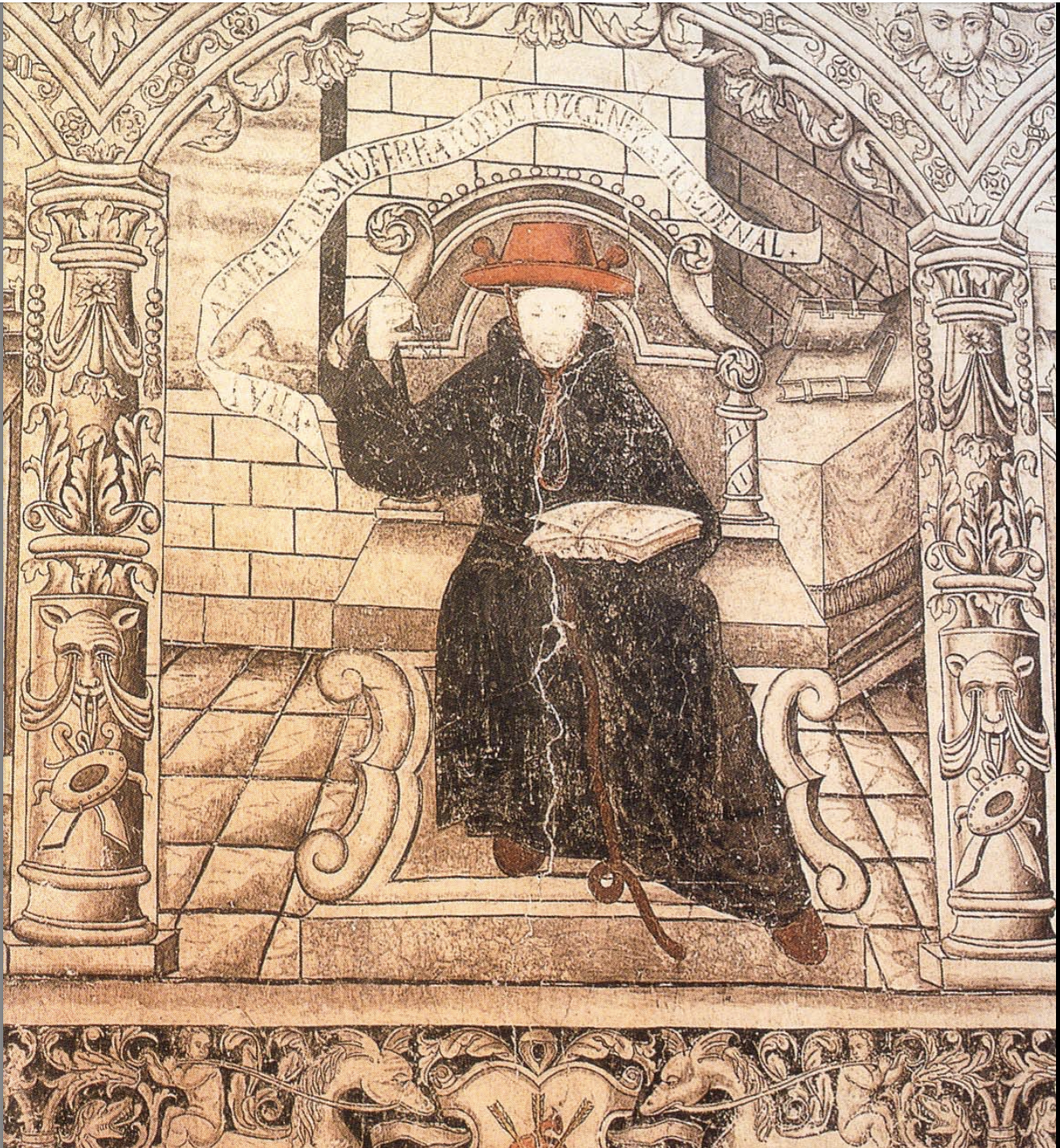
saint of the augustinian order, staircase mural 1575. monastery of san Nicolas de tolentino
uses linear perspective, not known before pre-contact. shows viewers their augustinian power. based on prints.
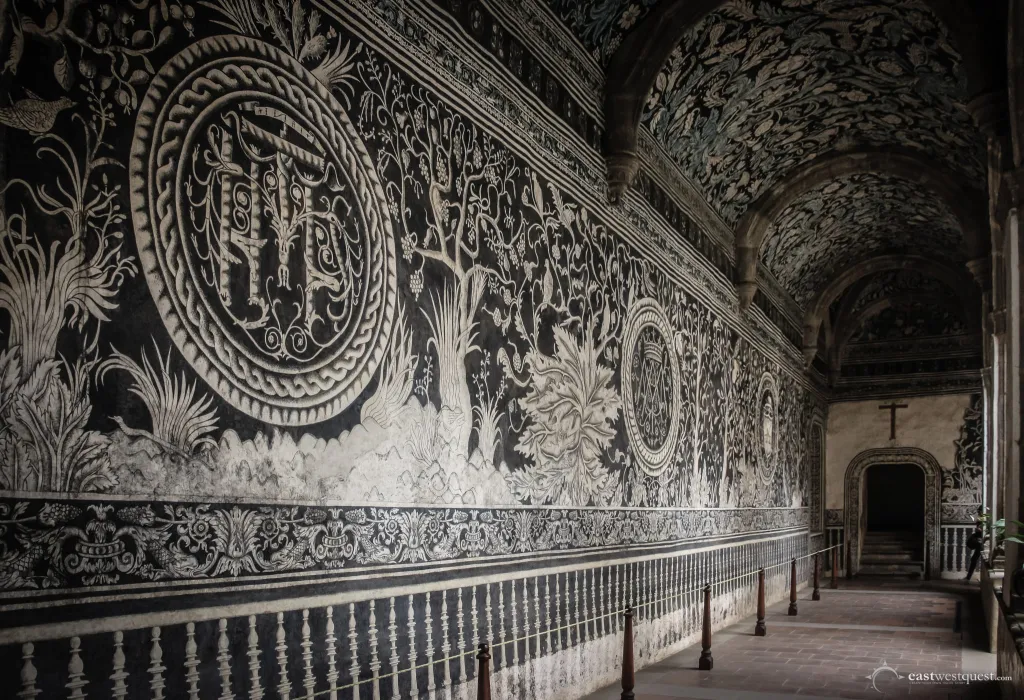
cloister paintings, convent of San Salvador de malinalco 1571.
fresco secco- dry fresco. has flowry paradise- references aztec concept similar to heaven.
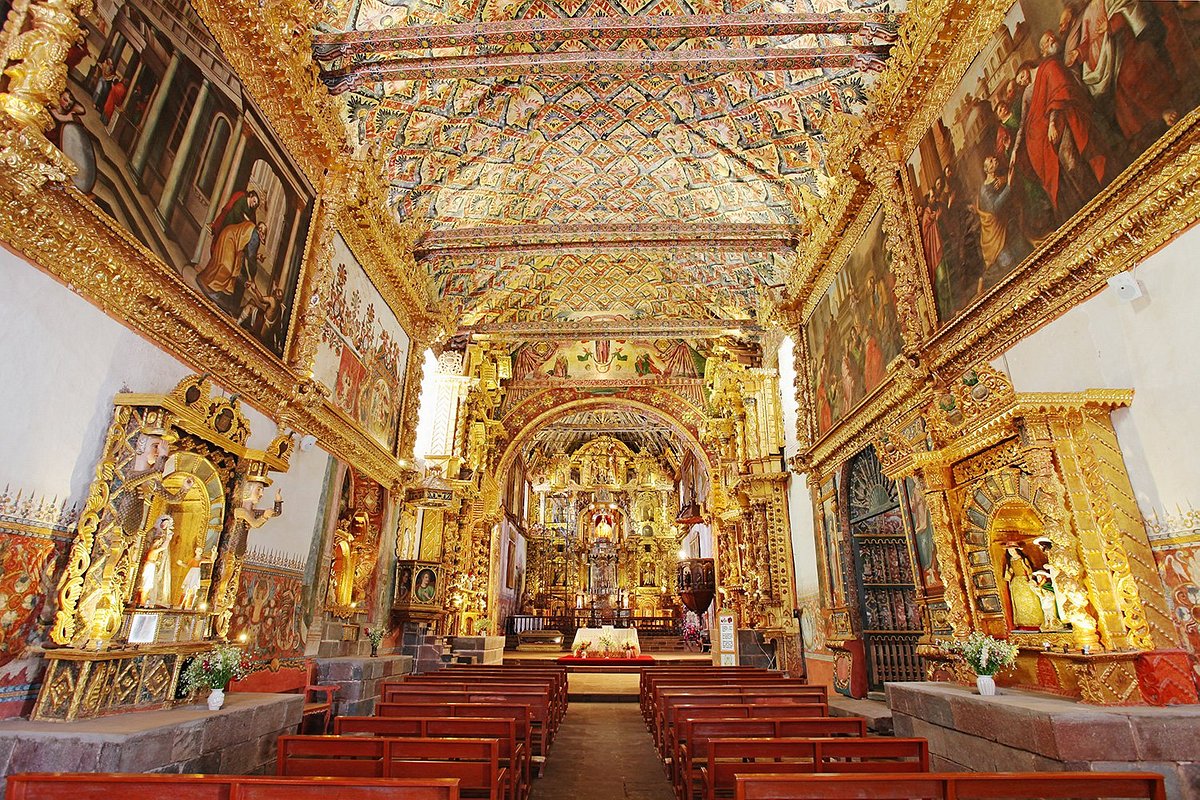
san pedro apostol de andahuaylillas, 16th century
andean baroque- european, islamic, and andean traditions. known as “sistine chapel of the americas”
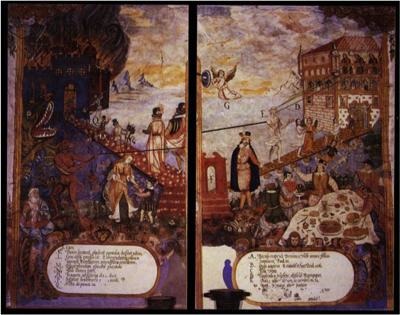
The paths to heaven and hell, Luis de Raino and indigenous collaborators
also fresco secco. along the doorway. shows the devil side and the soul on the righteous path